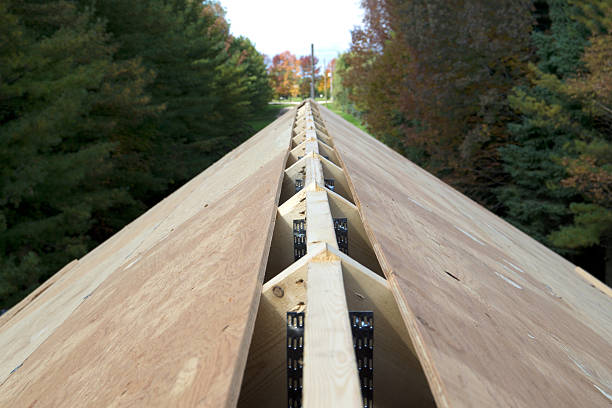
When it comes to attic ventilation, homeowners and builders often debate the effectiveness of different venting systems. One common question that arises is whether a ridge vent is an active or passive ventilation system. Understanding how ridge vents function, especially in comparison to an active ventilation system, is key to ensuring proper attic ventilation and overall home efficiency.
A ridge vent is a type of ventilation installed along the peak of a roof. The ridge vent is supported by the roof deck, which is the foundational layer of the roofing system. It allows warm, moist air to escape from the attic, promoting better airflow and preventing issues like mold, mildew, and excessive heat buildup. Ridge vents work in conjunction with soffit vents, which allow cooler air to enter from the eaves, creating a continuous ventilation cycle.
A ridge vent is a specialized type of roof vent installed along the peak, or ridge, of a roof. This continuous vent runs the entire length of the roof’s ridge, providing a uniform opening for air to flow in and out of the attic space. By allowing warm, moist air to escape, ridge vents play a crucial role in maintaining proper attic ventilation and preventing issues like heat buildup and moisture accumulation.
The primary purpose of a ridge vent is to facilitate effective attic ventilation by allowing for the exchange of air and the removal of excess heat and moisture. Ridge vents work in tandem with soffit vents to create a balanced ventilation system. Cool air enters the attic through the soffit vents and rises, pushing the warm air out through the ridge vent. This continuous airflow helps to maintain a healthy attic environment, preventing damage and deterioration caused by excessive heat and moisture.
Ventilation systems can generally be classified into two categories: active and passive.
A ridge vent is a key component of passive ventilation systems. It does not use any mechanical means to move air but instead relies on the natural movement of air due to pressure differences. As warm air rises within the attic, it exits through the ridge vent while cooler air enters through the soffit vents, creating a continuous flow that regulates attic temperature and moisture levels.
Gable vents and ridge vents are two common types of ventilation systems used to ensure proper airflow in attics. While both serve the purpose of ventilating the attic, they differ significantly in their design and functionality.
Gable vents are typically installed in the gable end of a roof and are often triangular in shape. They provide ventilation through a single opening, allowing air to flow in and out of the attic. Ridge vents, on the other hand, are installed along the ridge of the roof and offer a continuous opening for air movement. While gable vents are often used in combination with soffit vents to create a balanced ventilation system, ridge vents can function effectively as a standalone system, providing consistent and uniform airflow along the entire roofline.
Proper attic ventilation is essential for maintaining the health and safety of your roof. Effective attic ventilation helps to remove excess heat and moisture from the attic space, preventing potential damage and deterioration.
Attic ventilation is vital for several reasons:
Overall, maintaining proper attic ventilation is crucial for ensuring a healthy and safe roof, and ridge vents play a key role in achieving this by providing effective ventilation in the attic space.
While ridge vents work well in many situations, there are cases where additional active ventilation may be necessary. Gable end vents, installed at the intersection of roof slopes, can enable airflow through the attic by relying on external wind, playing a crucial role in effective attic management. If a home has poor soffit ventilation, inadequate attic space, or experiences extreme heat buildup, an active system such as a powered attic fan may be used to supplement passive ventilation. Solar powered vents, which rely on solar energy instead of electricity, can also be considered as an alternative to traditional power vents, offering energy savings but with limitations like insufficient battery charge for continuous operation.
A ridge vent is a passive ventilation system that effectively helps regulate attic temperature and moisture without relying on mechanical components. When properly installed alongside soffit vents, ridge vents provide an energy-efficient and low-maintenance solution for attic ventilation. However, in some cases, additional active ventilation may be needed to optimize airflow and ensure the best possible indoor climate.